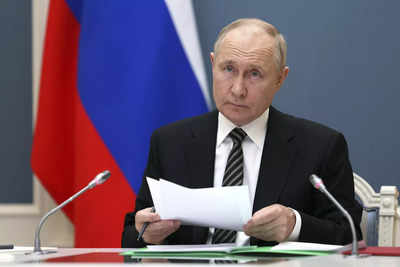
Russian President Vladimir Putin conducts an annual phone-in event where citizens of Russia have the opportunity to speak directly with him. This year, a deepfake version of Putin surprised everyone by asking a question. The deepfake, created using AI, looked exactly like Putin. It raised concerns about the dangers of deepfake technology and artificial intelligence. Deepfakes are AI-generated synthetic media that manipulate or create realistic-looking content, such as videos or images, by analyzing and learning from vast datasets. As technology advances, the challenges of detecting and mitigating the impact of deepfakes on society, including politics and media, continue to grow.
Russian president Vladimir Putin is known to conduct an annual phone-in with the people of his country. The ‘event’ gives citizens of Russia an opportunity to speak ‘directly’ with their president. This year Putin dropped a surprise when a ‘
deepfake
’ Putin asked a question to the real one. A questioner — created using
AI
— was planted and looked exactly like Putin.
The ‘deepfake’ Putin asked, “Mr President, good afternoon, I am a student studying at St Petersburg Institute. Do you have a lot of twins? And another point, what is your attitude towards the dangers with neural networks and artificial intelligence?”
The idea was to demonstrate how deepfake works and how AI can be used dangerous. The ‘real’ Putin answered “I see you may resemble me and speak with my voice. But I have thought about it and decided that only one person must be like me and speak with my voice, and that will be me,” Putin responded.
Watch: Russian Vladimir Putin Visibly 'Shocked' after an 'Unexpected Encounter' with his AI double
In the aftermath of the live phone-in, questions lingered about the origin and purpose of the
AI version of Putin
. Whether this was a showcase of technological prowess, a demonstration of the potential for AI in political communication, or something else entirely remained unclear.
What are deepfakes?
Deepfakes are AI-generated synthetic media that use deep learning algorithms to manipulate or create realistic-looking content, often in the form of videos or images or voice. In Putin’s case it was voice and video both.
These sophisticated algorithms analyse and learn from vast datasets of images and videos to replicate the facial expressions, gestures, and speech patterns of a target person.
Deepfakes have raised concerns due to their potential for spreading misinformation, creating realistic fake videos of public figures, and manipulating visual content for malicious purposes. As technology advances, the challenges of detecting and mitigating the impact of deepfakes on various aspects of society, including politics and media, continue to grow.












 English (US) ·
English (US) ·